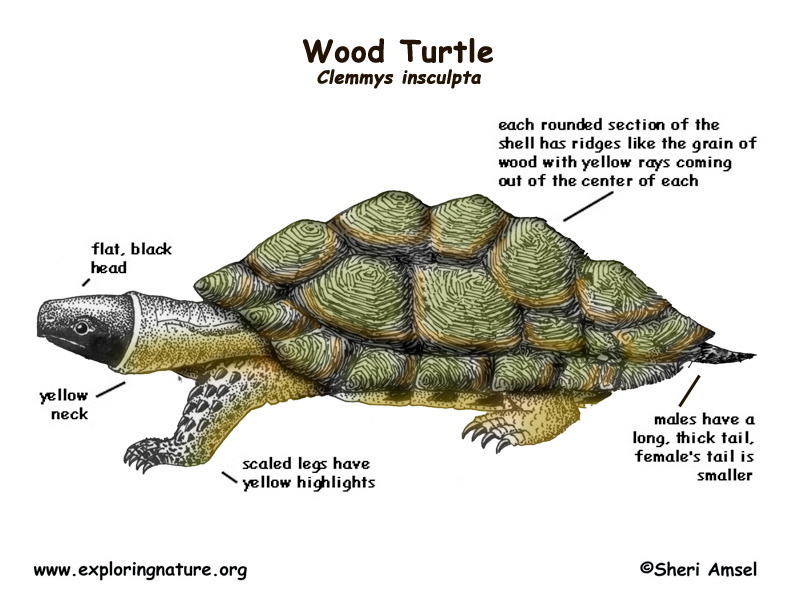

They are found in northeastern North America, from Nova Scotia, Canada south to Virginia, and as far west as Minnesota.
They live near rivers and streams in forests.
Their shell (carapace) is about 6 – 8 inches long and each raised, round area on its shell has rings like the rings of a tree with yellow coming out from the center like a sunburst. Their legs are brown with yellow on it. Their neck is yellow (sometimes red).
They are active during the day (diurnal). When the weather, turns cold they burrow into the side of a bank and sleep for the winter (hibernate). They are known to stamp the ground to attract worms to the surface. They live more than 50 years.
They eat both plants and animals (omnivorous) like: insects, mussels, dead animals (carrion), berries, and plants.
Their only real threat is habitat loss by pollution and development.
Females lay 4 - 17 eggs in a nest in the sand. They hatch in 3 months in September.
Kingdom: Animalia
Phylum: Chordata
Subphylum: Vertebrata
Class: Reptilia
Order: Testudines
Family: Emydidae
Genus: Clemmys
Species: C. insculpta
When you research information you must cite the reference. Citing for websites is different from citing from books, magazines and periodicals. The style of citing shown here is from the MLA Style Citations (Modern Language Association).
When citing a WEBSITE the general format is as follows.
Author Last Name, First Name(s). "Title: Subtitle of Part of Web Page, if appropriate." Title: Subtitle: Section of Page if appropriate. Sponsoring/Publishing Agency, If Given. Additional significant descriptive information. Date of Electronic Publication or other Date, such as Last Updated. Day Month Year of access < URL >.
Amsel, Sheri. "Turtle (Wood)" Exploring Nature Educational Resource ©2005-2024. December 15, 2024
< http://www.exploringnature.org/db/view/525 >

